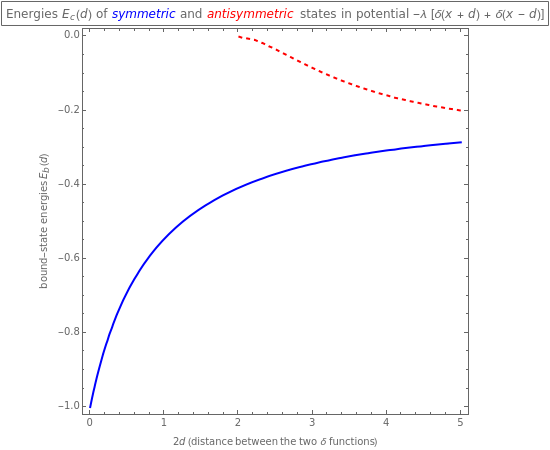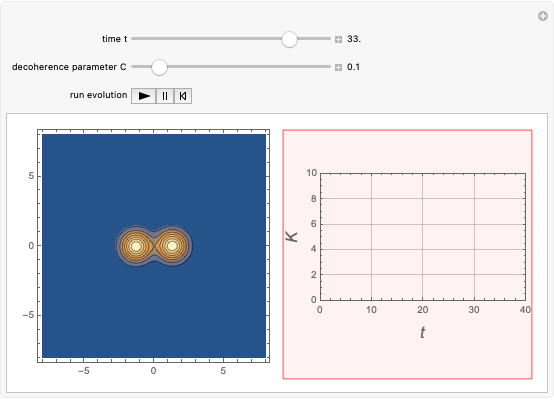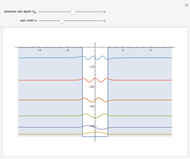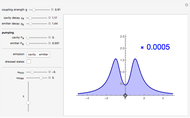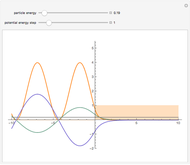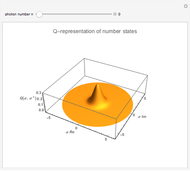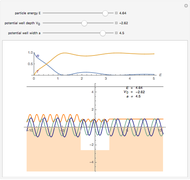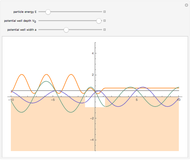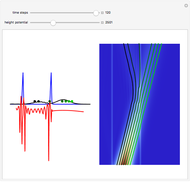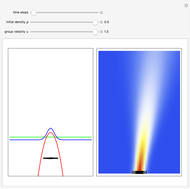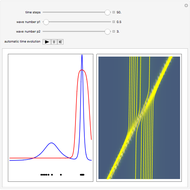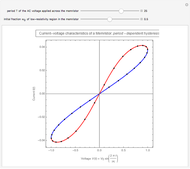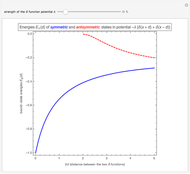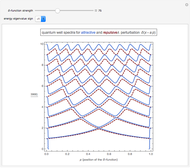Bound-State Spectra for Two Delta Function Potentials

Requires a Wolfram Notebook System
Interact on desktop, mobile and cloud with the free Wolfram Player or other Wolfram Language products.
This Demonstration shows the bound-state spectra  of a particle of mass
of a particle of mass  in the presence of two attractive
in the presence of two attractive  potentials separated by a distance
potentials separated by a distance  ,
,  . Since the Fourier transform of this potential is factorizable,
. Since the Fourier transform of this potential is factorizable,  , the bound-state spectra are easily obtained using the momentum-space Schrödinger equation. The energies are normalized to the magnitude of the symmetric-state energy at
, the bound-state spectra are easily obtained using the momentum-space Schrödinger equation. The energies are normalized to the magnitude of the symmetric-state energy at  . Note that the second (antisymmetric) bound state appears only when the distance between the
. Note that the second (antisymmetric) bound state appears only when the distance between the  functions exceeds the critical value
functions exceeds the critical value  .
.
Contributed by: Christopher R. Jamell and Yogesh N. Joglekar (IUPUI) (March 2011)
Open content licensed under CC BY-NC-SA
Snapshots
Details
Snapshot 1: typical symmetric and antisymmetric bound-state energies  as a function of distance
as a function of distance  between the two attractive
between the two attractive  functions
functions
Snapshot 2: for a weak potential strength  , a second bound-state, the antisymmetric state, appears only when the distance between the two
, a second bound-state, the antisymmetric state, appears only when the distance between the two  functions is large,
functions is large, 
Snapshot 3: for a strong potential  , the symmetric and antisymmetric states become degenerate when the distance
, the symmetric and antisymmetric states become degenerate when the distance  between the two
between the two  functions is increased
functions is increased
Analytical and numerical treatment of the Schrodinger equation in momentum space can be found in W. A. Karr, C. R. Jamell, and Y. N. Joglekar, "Numerical Approach to Schrodinger Equation in Momentum Space," arXiv, 2009.
Permanent Citation
